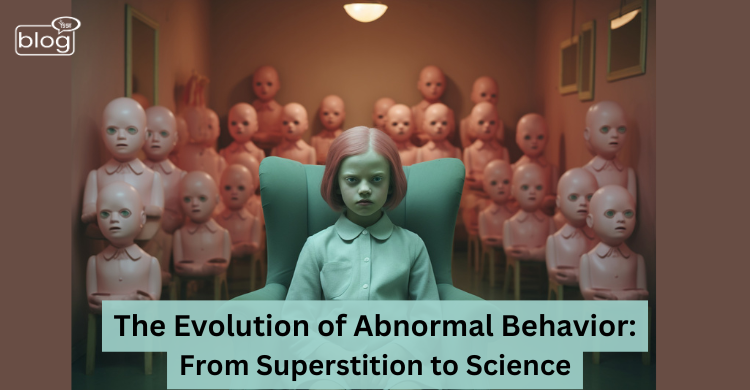Abnormal behavior has had a vast context change over time. While earlier, this subject was related to supernatural phenomena, it now embodies the emerging scientific compassion. This paradigm reflects the change in outlook on viewing mental health from fear and superstition to an earthy appreciation based on principles of psychology, psychiatry, and neuroscience.
Ancient Beliefs: Supernatural Explanations
Mental illness in ancient cultures was largely explained in terms of the supernatural. In the opinion of the Egyptians, Greeks, and Romans, abnormal behavior was seen as divine punishment or demon possession. They believed that if one exhibited strange behavior, he was possessed by evil spirits or punished by the gods. Treatment procedures then included rituals or sacrifices of the religious world as well as physical punishment. They were confined, as the world out there described them as evil, corrupted, or accursed.
Middle Ages: The Role of Religion
Christianity in the Middle Ages took another look at mental illness, deciding that afflicted individuals were demonically or witch-possessed. Several persecutions during this time led to the torture or execution of mental patients. The belief system of the church led to the inhumane treatment of these human beings, including physical restraints, beatings, and executions.
Hysteria: The Force of Mass Fear
Mass hysteria- whereby a group manifests strange symptoms of psychological distress- has been common throughout history. Most social unrest is a product of shared fears or fatal obscurities. These include the “dancing plagues” in medieval Europe, in addition to the Salem witch hunt. In the latter state, a number of young girls in Massachusetts began engaging in strange activities, which served to instill panic and uproar over witchcraft. This hysteria, driven by fear, reinforced the reality that expediency and social fears could lead to innumerable deaths based on no solid evidence and showed how the human mind can become very irrational when in the platform of mass hysteria.
Enlightenment: Birth of Modern Thought
The seventeenth and eighteenth centuries became the torch, bypassing enlightenment, that is, rejecting superstition. “Reform and Humanization in the Treatment of the Insane”: A very humane treatment was suggested for the insane, indeed, by philosophers such as Philippe Pinel in France and William Tuke in England. As unchaining has become a leading symbol representing the transition from cruel treatment to more human, moral treatment. Also, the charity exerted by Tuke through the establishment of the York Retreat served to accentuate the dignity of treatment extended towards the insane and thereby emphasized different approaches in mental healthcare that mandated
kindness.
Birth of Psychological Theories
Modern psychology took a leap into the nineteenth century. No more did people go for supernatural explanations as the all-encompassing recourse of answers to the problems. Explanations for human behaviour were there for one to see through observation and experience. The notions of the unconscious and childhood have totally changed the conceptions of mental disorders in psychoanalysis, evolved by Sigmund Freud. Freudian explanations gave a solid base on which the entire field of psychotherapy was developed, and longer theories were built one after another.
Rise of behavioral and cognitive theories in the twentieth century
In the twentieth century, human aberration was addressed by scientific means. For example, behavioralism (designed by B.F. Skinner) was based on conditioning and reinforcement shaping behavior. Then, along came the emergence of cognitive theories, perhaps the most well-known being the contributions of Aaron Beck, which widened the horizon in the conceptualization of mental disorders. This cognitive-behavioral therapy rapidly became one of the major ways in which treatment was carried on, in which the two separate paradigms coalesced into one theoretical framework.
Modern Day: Biopsychosocial
In the present day, the most inclusive approach to abnormal behavior is the biopsychosocial model. Here, biological, psychological, plus social factors, in combination, are considered necessary prerequisites for any sort of understanding of mental health. Modern treatment modalities for mental health problems include psychotherapy, the use of medications such as antidepressants and antipsychotics, and lifestyle changes. The stigmatization of mental illness is less so these days, with the more open and wider view toward mental health education, awareness, and support systems.
The Journey
The progression from superstition to science in the understanding of abnormal behavior has been lengthy and convoluted. From the dawn of time, there existed a time when mental illness was genuinely dreaded and poorly understood. Society has traveled quite a distance from then to confirming it as a legitimate medical issue. The evolution of mental health transformed this journey into a soothing one.
To read more blogs like this, click here
Writer
Jeba Anika Chowdhury
Intern, Content Writing Department
YSSE

